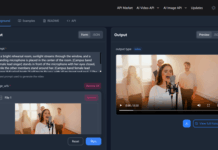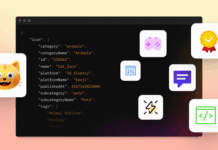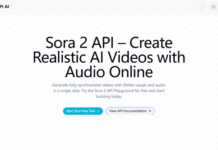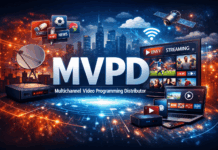 Large language models are driving innovation in business automation, communication, and data analysis. In 2025, their application is no longer confined to research labs or tech giants. Organisations across sectors are now building and deploying LLM-powered tools to understand natural language, generate human language, and deliver real business value.
Large language models are driving innovation in business automation, communication, and data analysis. In 2025, their application is no longer confined to research labs or tech giants. Organisations across sectors are now building and deploying LLM-powered tools to understand natural language, generate human language, and deliver real business value.
This guide to LLM development in 2025 will walk you through the lifecycle of building LLM products, from data training to fine-tuning and integration. If you’re looking to bring these capabilities in-house, you can also hire LLM developers to fast-track progress with the right technical expertise.
What Are Large Language Models?
Large language models (LLMs) are deep learning systems trained on vast datasets to understand and generate human-like text. They rely on transformer architecture to process input text and identify patterns in language. LLMs are capable of handling complex tasks such as language translation, sentiment analysis, and responding to natural language queries.
The strength of an LLM lies in its model’s ability to process diverse datasets and generate language that matches human tone, intent, and context.
The LLM Product Development Lifecycle
Developing an LLM-powered product involves several phases, some of which mirror traditional software development while others are unique to machine learning.
Defining Use Cases and User Needs
Successful LLM development begins by identifying specific tasks the model will support, such as content creation, customer support automation, or language translation. Understanding user needs helps define the scope of the solution and ensures it delivers measurable value.
Data Selection and Preparation
LLMs are only as good as the training data they learn from. Selecting relevant data is essential for generating accurate and coherent outputs. This includes both general language data and industry-specific content, depending on the application.
Fine-Tuning the Model
Fine-tuning takes a pre-trained model and adjusts it for particular use cases. This step enhances the model’s understanding of the business context, improves performance for natural language processing tasks, and enables the model to generate more precise responses.
Evaluation and Performance Metrics
Model performance should be evaluated against clear benchmarks, including accuracy, response time, energy consumption, and user satisfaction. These performance metrics help ensure the model’s capabilities align with business goals.
Seamless Integration with Existing Systems
Once the model is trained and tested, the next challenge is ensuring seamless integration. LLMs must work with existing software platforms, data pipelines, and APIs. This requires experience in software development and a strong grasp of relevant programming languages.
Proper integration enables the LLM to become part of customer-facing applications, internal systems, and workflows. For example, LLMs can power virtual assistants, automate content creation, enhance search engines, support data analysis tasks, and assist with various types of AI in general.
Practical Applications of LLMs in 2025
 LLMs are enabling businesses to solve real-world problems across departments:
LLMs are enabling businesses to solve real-world problems across departments:
- Customer interactions: Automating responses based on human language inputs to reduce wait times and increase satisfaction
- Content generation: Creating articles, emails, and code snippets with minimal user input
- Sentiment analysis: Monitoring public or internal sentiment to guide product and marketing strategy
- Search enhancement: Improving search engine relevance through a better understanding of natural language queries
- Language translation: Supporting global communication with accurate and context-aware translation
These applications rely on the model’s parameters being tuned to understand natural language and respond appropriately to varying user inputs.
Continuous Improvement and Feedback Loops
Unlike traditional software, LLM-powered tools can improve over time through user feedback. This enables businesses to adapt models based on how users interact with them.
Incorporating feedback supports continuous improvement, allowing the model to become more aligned with specific use cases. Few-shot learning methods also let teams add new capabilities using a small number of examples rather than retraining the entire model.
Ethical Considerations in LLM Development
As LLMs take on more responsibility, ethical considerations become more prominent:
- Bias mitigation: Ensuring training data does not reinforce stereotypes
- Data privacy: Protecting sensitive or regulated information
- Energy efficiency: Reducing the significant computational power required to train and run models
- Transparency: Explaining how outputs are generated, especially for business-critical decisions
Governance frameworks are essential for managing these challenges and maintaining trust in AI systems.
Essential Tools and Technical Expertise
Developing LLMs requires a combination of technical disciplines:
- Machine learning libraries (e.g., PyTorch, TensorFlow)
- Data preprocessing pipelines for diverse datasets
- Strong knowledge of natural language processing tasks
- Programming proficiency, often in Python
- Infrastructure to handle high resource demand
Businesses lacking in-house capabilities often choose to hire experts who understand both the technical and strategic sides of LLM product development.
LLMs Are Just the Beginning
In 2025, the role of large language models continues to expand. What began as experiments in generating human-like text has evolved into a foundational shift in how machines understand natural language and assist with complex tasks.
Generative AI is now embedded in a wide range of tools and industries. From customer support to search and content automation, LLMs are not just a trend—they are enabling businesses to innovate, scale, and respond faster to user needs.
Final Thoughts
LLM development in 2025 is defined by increasing accessibility, better tools, and proven business value. Whether you’re building a specialised model from scratch or integrating language capabilities into existing systems, understanding the LLM product development lifecycle is essential.
With the right data, expertise, and infrastructure, large language models offer transformative potential for automating content creation, improving customer interactions, and gaining insight from natural language inputs.


















